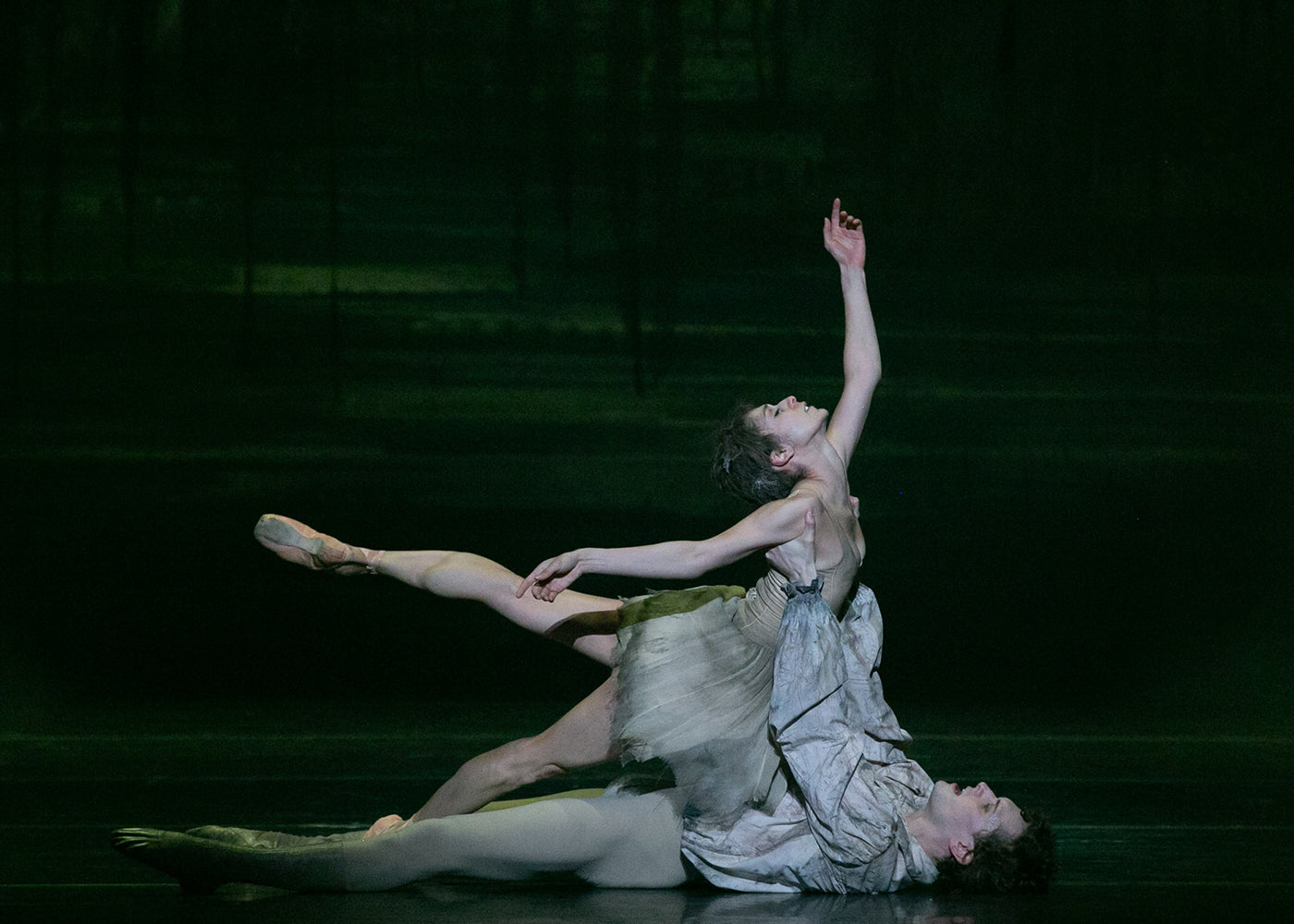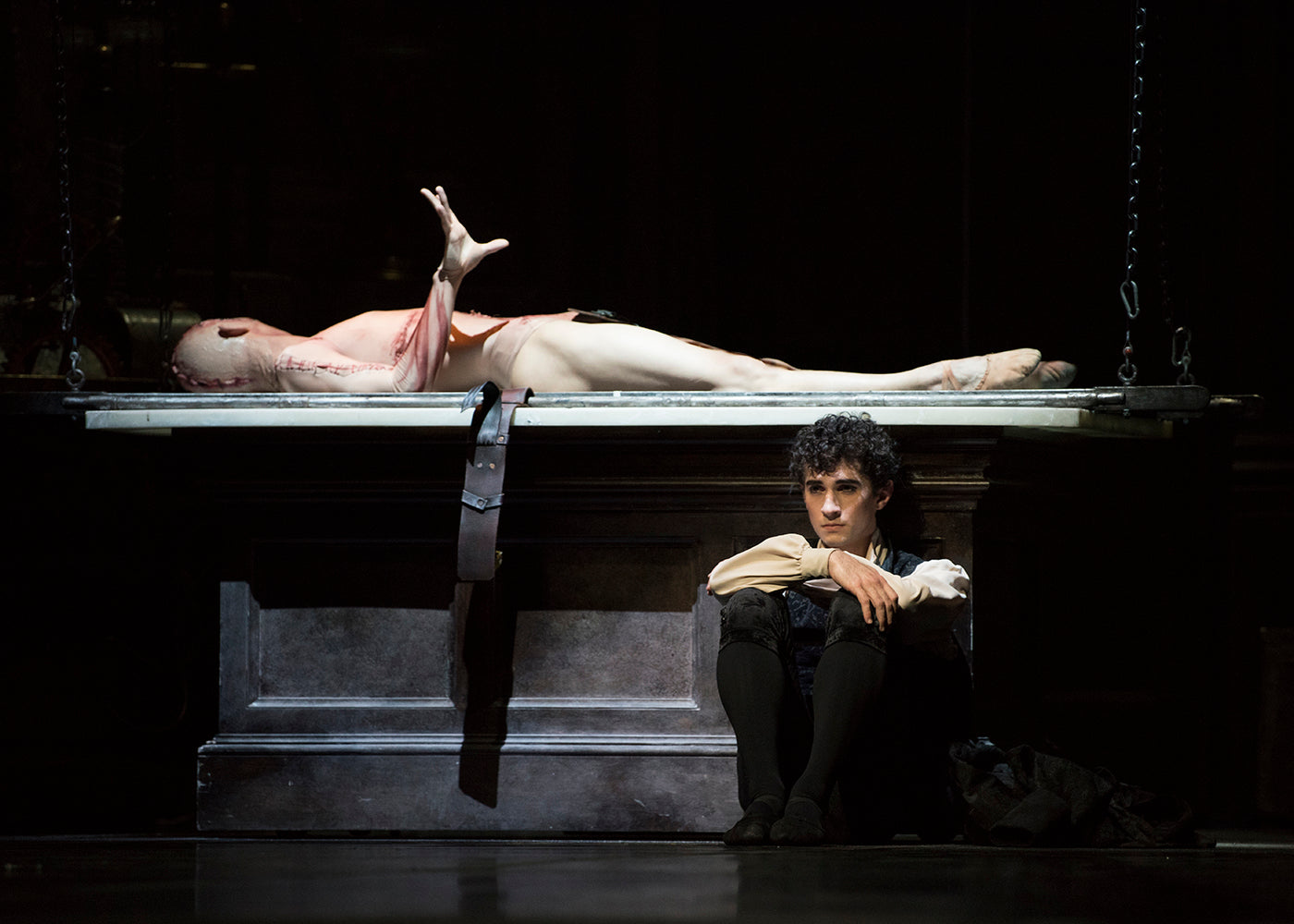So wrote Jean-Jacques Rousseau about not an ethereal being but of Madame de Warens upon recalling her memory some twenty-eight years since they met. But I can just easily imagine our Scottish farmer, James, in “La Sylphide” (1836), uttering similar sentiment in the woodland glade of act II to the ethereal creature flitting weightlessly before him: ‘We did indeed have such days, but how brief and fleeting they were, and what fate followed them!’ How fleeting indeed. When we think of Romanticism, be it in literature, opera, art, music or ballet, we think immediately of the movement’s fascination with nature. Grass underfoot is not soggy but ‘damp with dew,’ and happiness no lasting state ‘for man in this world.’ Simplicity and naturalness, and affection and sorrow all tied up with a ribbon of romantic longing. Communing with nature and abandoning the senses and the heart to enjoyment, and love, the motivational force behind one’s actions, the Romantics, for me, have come to define what it is to be human: glorious and fallible sensory beings. And it is perhaps part of the reason such romantic ballets, like “La Sylphide,” live on and continue to entrance.
Rousseau’sten lyrical meditations penned in the two years before his death in 1778 and other works, such as Confessions, for me, have always encapsulated this sense of simplicity and nature tied together.[note]Curiously, Rousseau’s own appearance and delicate features were even described by Thomas Bentley as being of the supernatural world: ‘When Nature was making this singular being, one would imagine she intended him for an inhabitant of the air, but before she had finished his wings he eagerly sprung out of her hands, and his unfinished body sunk down to earth.’[/note] Greenery is here akin to earthly paradise. And greenery abounds and entices in “La Sylphide,” viewed at first through the large window of the farmhouse setting, so vivid in its refusal to be ignored, and in the sylph herself, hovering weightless en pointe, in turn encapsulating August Bournonville’s choreography of ballon. Of the air, our sylph barely touches the ground. She easily captivates James, and presents a female figure at ease with her affections.
Seeing this work recently performed by the Australian Ballet as a double bill with Marius Petipa’s “Paquita” serving as an irresistible 19th-century classicism appetiser, is like discovering a much sort after time machine. Both works feel so of their time that to see them is to feel transported to a theatre in the 1800s. This sensation comes from the choreography, from the way it uses the body, what it asks of the body, and from the emphasis upon the rapid feet movements in “La Sylphide,” a two-act ballet synonymous with putting the dancers en pointe without the aid of overhead wires and “flying machines.” In “La Sylphide” we see memory of the first sylph Marie Taglioni, who, as artistic director David McAllister explained ‘used her incredible ability to balance on her toes for the first time in this work. The illusion of barely touching the floor, hovering on the tips of her toes, gave Taglioni a weightlessness that removed her from the earthly realm and enabled her to inhabit the role of the woodland fairy she portrayed. What Taglioni began has now evolved into a technique employed by every ballerina.’
In seeing these two works, though particularly “La Sylphide,” I am keenly aware that a ballet can be both timeless and of its time. This for me is part of its beauty. It is beautifully of its time. It shows us clearly what ballet was at that exact period. And in showing us what ballet was in 1836, it shows us evolution of technique and style. This production of “La Sylphide” has been handed down by Danish ballet masters since its 1836 debut appearance thereby making it a close-to authentic and pure work, and whilst not the same version as performed by Taglioni, in Erik Bruhn’s choreography after Bournonville I like to imagine we are seeing close to what audiences saw centuries ago.
In “Paquita” it is easy to imagine the audience in rapturous applause as legs fly so high they could detach, and hands give impression of pushing against the resistance of water, for this work, now more commonly performed as the one-act marriage scene between Paquita and the French nobleman whose life she has saved, is a work chiefly about impressive technique over narrative. Revised by Petipa, our Paquita remains our Spanish gypsy who discovers that she is of noble blood and thus able to marry her beloved Lucien, but what holds is the detailed classicism and Spanish-styled épaulement that seeks to convey aristocratic elegance. It is this that most evokes the period and thus delights. Audiences on the two nights I attended, and the full dress rehearsal too, delighted in those keenly awaited 32 fouettés executed to timed perfection as much, I can only imagine, as they did many, many performances ago.
Both timeless and of its time. The landscape paintings of Théodore Gericault and John Constable, for example, embody the Romantic sensibility and as such show us today how they viewed the world. Nature is dramatic, and there is a terrific sense of melancholic reverie. Romanticism, in rejection of Enlightenment’s values placed upon reason and order, is, as Charles Baudelaire wrote in 1846, ‘a way of feeling.’ And it is this ‘way of feeling’ twinned with Bournonville’s lightness and beauty that sees us transported to liminal space between reality and dream, from farmhouse to cauldron-side and later woodland glade all by second act of “La Sylphide.” Nature is a great muse, and just like those dramatic paintings, it is not always the good hero who wins. There is heartache at the core of Romanticism, and one of the air and one of the earth cannot live together. And there is the grotesque, too, in Madge, the old fortuneteller serving as dramatic counter to ethereal and ultimately unattainable sylphs. Having cursed James as she is thrown out from the farmhouse for declaring that it will be his rival Gurn who will marry his intended Effie, there can be little doubt how this will end. James will end up with neither the supernatural sylph whom he is enamored of nor his fiancée Effie. A man divided between two loves, between two worlds, it is this very state of unrest and duality that we so closely associate with the Romantic period. For me this ballet is about the sad duality between the body and the soul, between reality and the unknown realm of dreams and ideas, and what it means to be human.
I was fortunate to see the full dress rehearsal before the varnish set and this only enhanced the magical otherworldliness of the ballet. Our Sylphide really does “fly” up the chimney in act I even though as is playfully revealed by David McAllister in a post-performance Q&A session it is owing to the aid of two unseen corps de ballet boys pulling her up. Knowing this does not alter the allure. How could it? You see only what you are meant to see: a view of the world through the borrowed eyes of the Romantics. Those tortured Romantics, they do love their anguish. As do I, it transpires.









comments